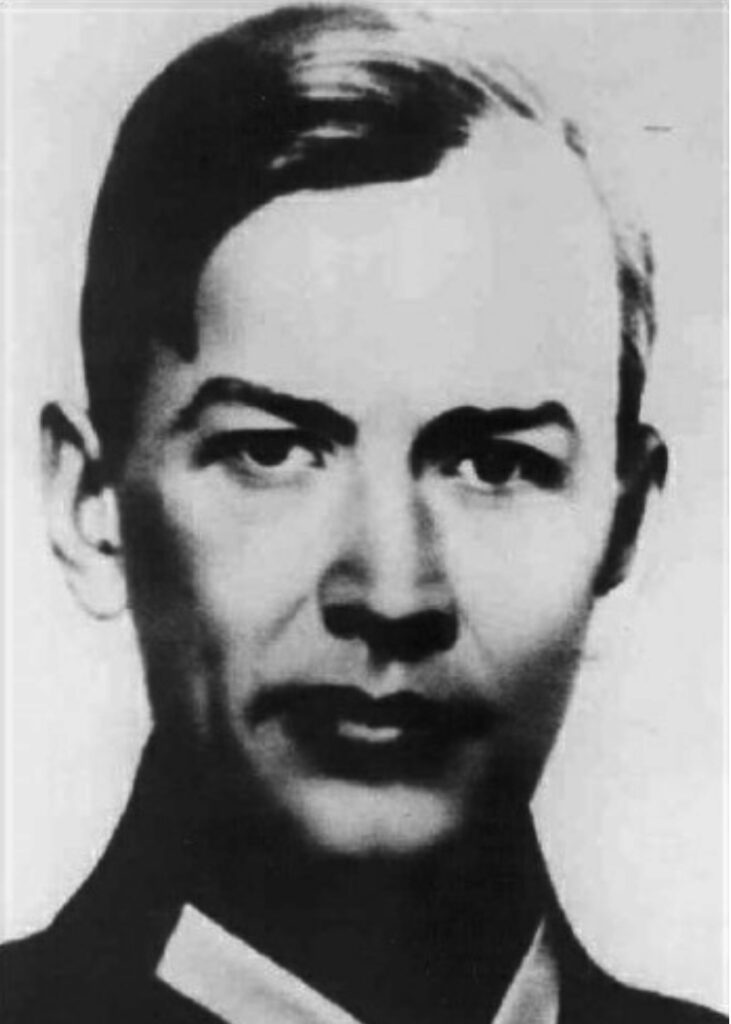The chief theoretician of the Soviet space program.
Mikhail Klavdiyevich Tikhonravov was born on July 29, 1900. After graduating from the Zhukovskiy Air Force Academy in 1925, he began a career in aviation and was one of the pioneers of glider and aircraft engineering in the Soviet Union. In the early 1930s, he began to pursue an interest in rocketry and space exploration, and on several occasions met with Konstantin Tsiolkovsky, the noted Soviet rocket pioneer. After Tsiolkovsky’s death in 1935, Tikhonravov helped popularize many of his ideas.
In 1932, Tikhonravov became chief of a work brigade at GIRD, the Group for the Study of Jet Propulsion. In 1933, he began a 33-year association with Sergei Korolev, later the Chief Designer of the Soviet space program. Together they developed Russia’s first liquid propellant engine rocket, the GIRD-09 that on August 17, 1933, reached an altitude over 1280 feet. Tikhonravov was to improve upon this basic design many times before Korolev’s death in 1966.
In 1934, Mikhail Tikhonravov became a division head at RNII, the Soviet government’s Scientific Research Institute of Jet Propulsion. There he directed the development of sounding rockets for upper atmospheric research while trying to improve the accuracy of Soviet rockets. In 1935, a liquid-propellant meteorological rocket of his design was successfully launched. From the mid-1940s on, Tikhonravov not only worked on high-altitude rockets but also helped educate a generation of Soviet rocket scientists and engineers.
In 1948, Tikhonravov made an unsuccessful proposal to the Kremlin to develop artificial satellites. Undeterred, in October 1951, he urged a flight to the Moon with two men in a 1,000-ton spacecraft. The disinterest of Soviet dictator Joseph Stalin in peaceful space pursuits doomed these suggestions. Finally, on May 27, 1954, a year after Stalin’s death Mikhail Tikhonravov was authorized to develop and launch satellite systems. On August 30, 1955, a unit was formed within Tikhonravov’s section of OKB-1 (Korolev’s secret design bureau) to develop the first satellite, a 6600-pound device named the “Zenit.”
In 1957, Tikhonravov was named the vice chairman of the newly created Commission on Interplanetary Communications. On July 2 of that year, he began the final development of the Zenit reconnaissance satellite, later renamed “Sputnik.” Launched by one of Korolev’s rockets, Sputnik became mankind’s first artificial satellite on October 4, 1957.
Tikhonravov was also a key participant in the design of the Sputnik 3 satellite, the Vostok manned spacecraft (the first of its kind), and early Soviet lunar and interplanetary probes. In 1959, he began work on a proposed manned vehicle to orbit the moon but the project was eventually abandoned. Tikhonravov also worked on the beginnings of the Soviet’s intercontinental ballistic missile (ICBM) program. In 1968, he became a corresponding member of the International Academy of Astronautics.
As its leading space theoretician, Tikhonravov was awarded several of the Soviet Union¹s highest civilian honors, including two Orders of Lenin (the first one for his work on the first Sputniks) and two Orders of the Red Banner of Labor. He also earned the Order of the Patriotic War, a Doctorate of technical sciences (in 1958), and was named a Hero of Socialist Labor in 1961, and an Honored Scientist of the Russian Federation in 1970.
Mikhail K. Tikhonravov died in Moscow on March 4, 1974. The Tikhonravov Basin and Tikhonravov Crater, both on Mars, are named for him.

